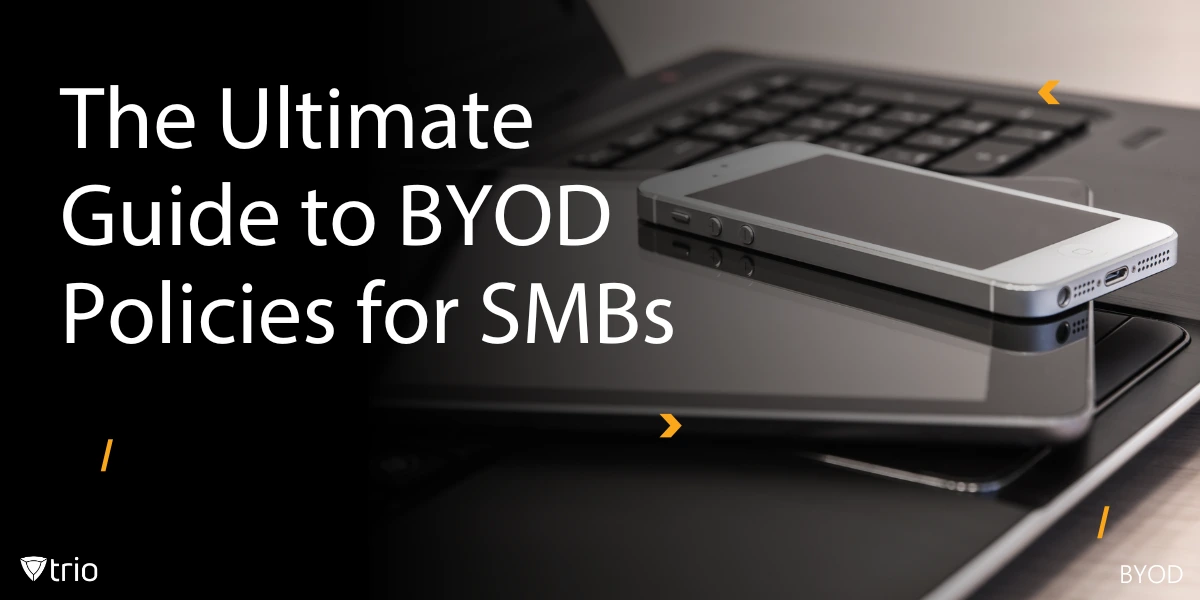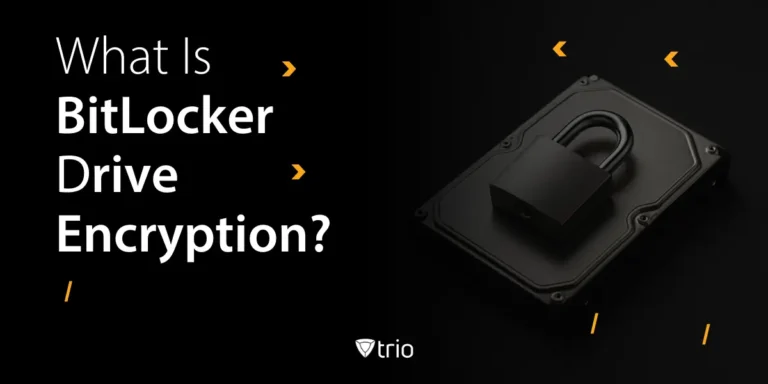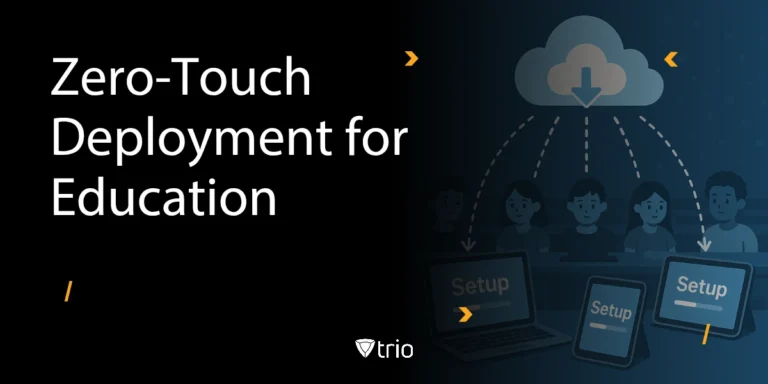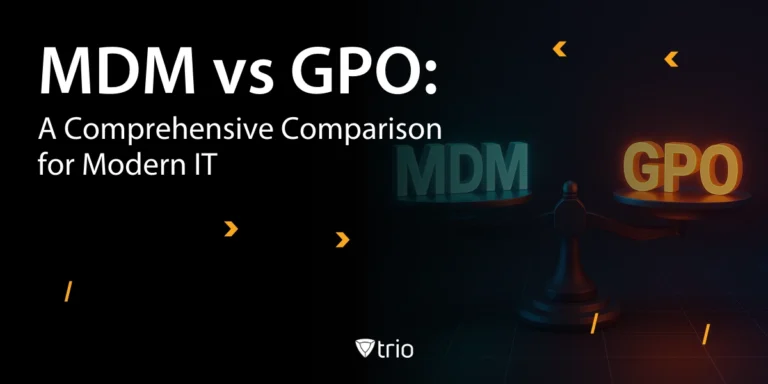The debate surrounding Bring Your Own Device (BYOD) policies remains a pivotal consideration for SMBs across various sectors. According to Research and Markets, “the global BYOD and enterprise mobility market is currently worth $98.8 billion. By 2026, that figure is expected to hit $157.3 billion.” Determining whether to adopt such policies demands a nuanced evaluation of numerous factors, from cost considerations to security risks and regulatory compliance.
Remote and hybrid work have made BYOD (Bring Your Own Device) a fact of life for SMBs. Letting employees use their own phones and laptops is agile and cost-effective, but risky if you don’t set the rules. This guide will help you craft a strong BYOD policy, choose the right device management model, and avoid common pitfalls, so you can unlock productivity and keep your company’s data safe.
TL;DR
- BYOD policies are essential for SMBs to balance security, compliance, productivity, and user privacy.
- There are four main device management models: BYOD, COPE, CYOD, and COBO; each with unique rules and risk profiles.
- This guide includes policy templates, step-by-step checklists, model comparisons, persona-driven playbooks, and real-world case studies.
- Designed for IT Admins, CISOs, and Infra Heads at SMBs.
- Outcome: Create or update a BYOD policy that scales with your business and keeps data safe.
What is a BYOD Policy?
A BYOD policy is a written agreement outlining how employees can use personal devices for work—what’s required, what’s allowed, and how company data is protected. It clarifies device eligibility, security, monitoring, compliance, and support boundaries. Without it, SMBs face confusion, data leaks, and compliance issues.
Why BYOD Policies Matter for SMBs
- Cost savings: You don’t need to buy hardware for every user.
- Employee productivity: Staff use devices they know; less training and downtime.
- Attract & retain talent: Flexible device/work policies help you compete for the best.
- Faster onboarding: New hires are productive on day one.
- Business resilience: Teams stay productive during disruptions or remote work.
But without clear policy, you get:
- Shadow IT/device chaos
- Compliance failures (GDPR, HIPAA, PCI-DSS)
- Lost/stolen devices leaking sensitive data
- Endless IT support tickets
Common BYOD Challenges
Implementing a BYOD policy introduces several challenges that organizations must address to ensure success:
Security Vulnerabilities
Personal devices may lack enterprise-grade security, increasing risks of data breaches, malware, or unauthorized access. Robust device security measures are essential to mitigate these threats.
Device Diversity
The wide range of devices, operating systems, and software versions complicates compatibility and IT support, potentially impacting system reliability and user experience.
Support Complexity
IT teams face increased workloads when troubleshooting and managing diverse devices, requiring specialized expertise and resources to maintain a secure BYOD environment.
How to Write a BYOD Policy
Crafting a robust BYOD policy is essential for maintaining security and setting clear expectations in a modern workplace. A strong policy acts as a comprehensive guide, ensuring consistency and compliance while balancing flexibility for employees using personal devices for work. It should be written in clear, straightforward language, covering all critical aspects of device usage, data security, and user responsibilities. Once drafted, this document should be mandatory reading and signed by every user who participates in the BYOD program.
- Purpose & Scope: Who/what’s covered, why it matters.
- Definitions: BYOD, MDM, work vs. personal data.
- Eligibility: Allowed devices/OS.
- Security Requirements: Passcode, encryption, updates, MDM/UEM required.
- Enrollment: Registration, setup, user consent.
- Acceptable Use: What’s allowed/prohibited (data, apps).
- Data Separation: Work/personal data split.
- Monitoring & Privacy: What IT can/can’t see/do.
- Compliance: Reference to laws, audits.
- Incident Reporting: How to report loss, malware, breach.
- Support: What IT helps with.
- Offboarding: Wiping company data, removing access.
- Enforcement: Consequences for non-compliance.
- Review: Update process.
BYOD Policy Rollout: Step-by-Step Checklist
Implementing a Bring Your Own Device (BYOD) policy requires more than just drafting a document; a well-planned and executed rollout is crucial for its success and adoption across the organization. This involves careful coordination between various departments, clear communication with employees, and the establishment of robust enforcement mechanisms. Follow this step-by-step checklist for your BYOD policy rollout:
- Draft your policy (pick model: BYOD, COPE, etc.)
- Get IT, legal, HR, leadership review
- Approve and publish (intranet, HR portal)
- Train users—onboarding and annual refreshers
- Require digital sign-off
- Enforce with MDM/UEM (block non-compliance)
- Track compliance
- Review/update annually or after incidents
Bonus: Types of Device Policies (BYOD, COPE, CYOD, COBO)
| Model | Owner | Personal Use | IT Control | Privacy | Cost | Support | Best For |
| BYOD | Employee | Yes | Low-Med | High | Low | Med | Agile SMBs, Fast, flexible SMBs |
| COPE | Company | Limited | High | Medium | High | Low | Regulated, sensitive, Healthcare, finance |
| CYOD | Mixed | Limited | Medium | Medium | Medium | Medium | Standardization, Scale-ups |
| COBO | Company | No | Highest | Low | Highest | Low | Field, legal, critical, Legal, compliance-heavy |
Tip: Most SMBs start with BYOD or CYOD, moving to COPE if risk increases.
Conclusion
The decision to implement Bring Your Own Device (BYOD) policies requires a thoughtful and thorough assessment of various factors, including cost, productivity, security, and compliance. It’s also important to check out BYOD security policy examples to assess these factors in detail. While there are many potential benefits to BYOD such as cost savings, increased flexibility, and employee satisfaction, it also poses significant challenges related to security risks, data privacy, and management complexity. By carefully weighing the pros and cons outlined in this article, business leaders can make informed decisions that align with their organization's goals and priorities.
Mobile Device Management (MDM) and security tools are critical for enforcing BYOD policies effectively. MDM solutions, such as those offered by Trio, enable IT teams to:
- Monitor and manage device compliance with BYOD policies.
- Enforce security settings like encryption and remote wipe capabilities.
- Separate corporate and personal data through containerization.
- Automate software updates and patch management to reduce vulnerabilities.
Discover how Trio's Mobile Device Management (MDM) solution can streamline your BYOD implementation, providing robust security, seamless device management, and regulatory compliance. Take control of your BYOD environment with Trio’s free demo today.
Frequently Asked Questions
While enrollment is optional, refusing MDM installation means the device won’t meet security requirements for accessing corporate resources. Employees must use company-managed devices instead.
he organization retains full ownership of all corporate data and intellectual property. Personal files, photos, and private information remain exclusively under the employee’s control.
Through secure containerization technology that creates a strict separation between work and personal data. IT administrators can only view, manage, or wipe corporate information – personal apps and data remain completely private.
Four essential components:
- Mandatory device enrollment
- Full-disk encryption enforcement
- Signed acceptable use policy documentation
- Regular compliance reporting capabilities.
Get Ahead of the Curve
Every organization today needs a solution to automate time-consuming tasks and strengthen security.
Without the right tools, manual processes drain resources and leave gaps in protection. Trio MDM is designed to solve this problem, automating key tasks, boosting security, and ensuring compliance with ease.
Don't let inefficiencies hold you back. Learn how Trio MDM can revolutionize your IT operations or request a free trial today!





